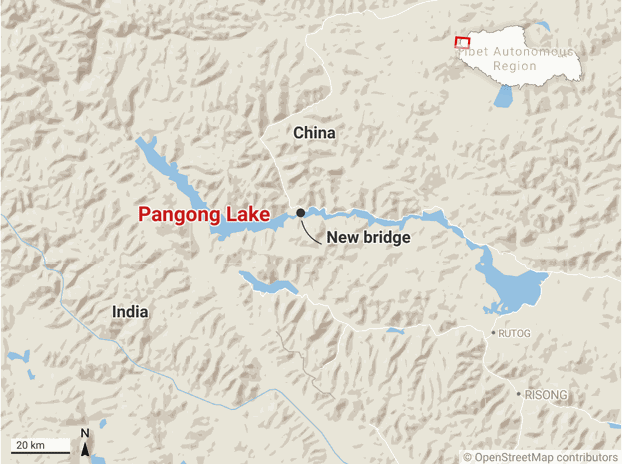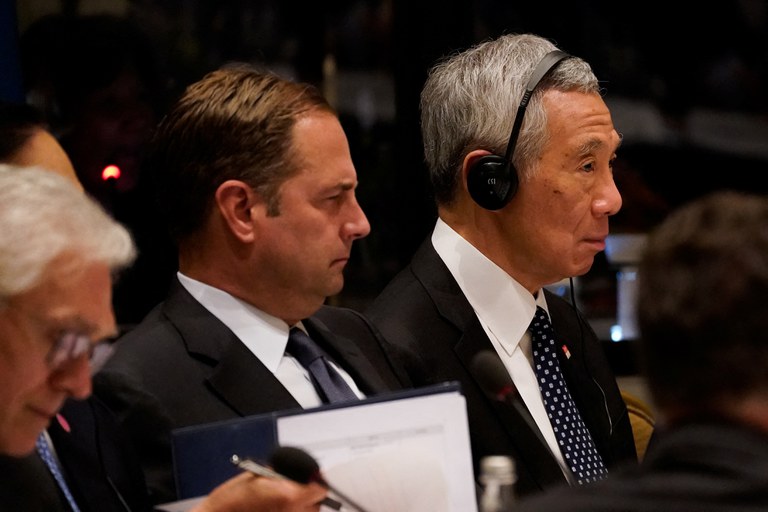Rights groups press UN ahead of trip to Xinjiang as detention camp list emerges
About 20 Uyghur, Tibetan and international human rights groups protested outside the United Nations compound in Geneva on Friday, calling on the U.N. human rights chief to release her report on abuses in Xinjiang and to consult internment camps survivors and other Chinese exiles ahead of her planned visit to China’s western region. The latest of numerous rallies by Uyghurs, Tibetans and other subjects of Chinese repression ahead an expected May visit by Michelle Bachelet, the U.N.’s high commissioner for human rights, came a day after the release on Thursday of a suspected police list with the names of more than 10,000 allegedly detained Uyghurs from one county in Xinjiang. Bachelet, a former Chilean president, is expected to visit the Xinjiang Uyghur Autonomous Region among other places in China this month, though the dates have yet to be disclosed. Bachelet first announced that her office sought an unfettered access to Xinjiang in September 2018, shortly after she took over her current role. But the trip has been delayed over questions about her freedom of movement through the region. “As the high commissioner and her team are preparing for a visit to East Turkistan, three and a half years after ‘unfettered access’ was requested, Uyghurs, Tibetans, Hong Kongers and other groups remain deeply concerned about the lack of transparency surrounding the terms of the visit, as well as the incomprehensible delay in publishing the high commissioner’s long-awaited report,” said a May 10 statement issued by the World Uyghur Congress, one of the groups that participated in the protest. During the protest, Uyghur groups sought to deliver a letter to the Office of the High Commissioner on Human Rights (OHCHR), specifying their demands for a credible visit, WUC said. “Today, we haven’t come before the U.N. to beg High Commissioner Michelle Bachelet,” said WUC president Dolkun Isa. “We have come here to hold her accountable. We have come here to remind her of her solemn duty. She has the inescapable duty to stop China’s genocide against Uyghurs.” China is accused of having incarcerated 1.8 million Uyghurs in mass detention camps. The United States and the legislatures of several Western countries have found that China’s mistreatment of the Uyghurs and other Muslim minorities in Xinjiang constitute genocide and crimes against humanity. China angrily rejects all such claims as politically motivated attacks on its security and development policies in the vast western region. Beijing has called for a “friendly” visit by the U.N. rights official, the kind that rights experts fear would help China whitewash the situation. ‘Fabricating malicious lies’ In a report to Congress, the U.S. State Department said it will increase pressure on Beijing over China’s maltreatment of the Uyghurs and other Turkic minorities in Xinjiang by raising concerns during meetings with other nations, multilateral institutions and the private sector, Bloomberg reported on Thursday. In response to a question about the report, Chinese Foreign Ministry spokesman Zhao Lijian repeated his government’s contention that “the allegation of ‘genocide’ in Xinjiang is nothing but the lie of the century concocted by some people in the U.S. in total disregard of facts.” “The international community has a fair judgment as to who is truly guilty of genocide,” he said. “The U.S. also knows the answer very well itself. We hope the U.S. will do some earnest soul-searching regarding the 500,000 child laborers working on American farms and all those Native American lives lost to genocide over the past decades. We also urge the U.S. to stop meddling in China’s internal affairs and put an end to its sinister agenda of containing China by fabricating malicious lies.” Uyghur groups, international organizations and lawmakers attended a three-day conference this week in Brussels, where they discussed ways for governments and companies in the EU to avoid purchasing products made by Uyghur forced labor. The European Commission will consider draft legislation to restrict the entry of forced-labor goods into European markets in September. U.S. lawmakers last year banned imports from Xinjiang unless they are certified as not having been made with forced labor. The act will be implemented in June. ‘High time’ For Uyghurs living abroad, the release on Thursday of a suspected police list with the names of more than 10,000 allegedly detained Uyghurs from Xinjiang’s Kashgar Kona Sheher (Shufu) county underscores the importance of Bachelet’s upcoming visit. The list, which also contains birthdates, ethnicities, ID numbers, addresses, sentence lengths and prison locations of the Uyghurs, was obtained by authorities in Turkey, Agence France-Presse reported Thursday. AFP said it is not been possible to independently verify the authenticity of the database. Nursiman Abdureshid on Friday told RFA that she discovered that her brother, Mamateli Abdureshid, had been sentenced to nearly 16 years in prison in Xinjiang from information on the leaked list. Nursiman, who is from Saybagh village in Kashgar Kona Sheher’s Shor township, now lives in Turkey with her family. She is also the sister of an RFA reporter. Nursiman said she lost contact with Mamateli in June 2017, the year that China stepped up its crackdown on Uyghurs. “I learned about the imprisonment of my brother in Aksu (in Chinese, Akesu) from this list,” she said. “The reason for his sentencing, the length of the sentence, his home address and ID are listed on it.” Mamateli was charged with “disrupting social stability” and “potential to join terrorist activities,” the same reasons the Chinese Embassy in Ankara gave her in 2020, Nursiman said. “I asked for the reason for his sentence, whether there was a trial, and where he was imprisoned, but got no response,” she said. More than 100 people on the list are from the same township, said Nursiman, who identified seven people she knew. “The genocide has been ongoing for the last five years,” she said. “The U.N. has failed to hold China accountable in spite of the recognition of the Uyghur genocide by the U.S.-led Western democracies, preponderance of evidence of genocide, testimonies of camp survivors and many lists of Uyghurs being…






